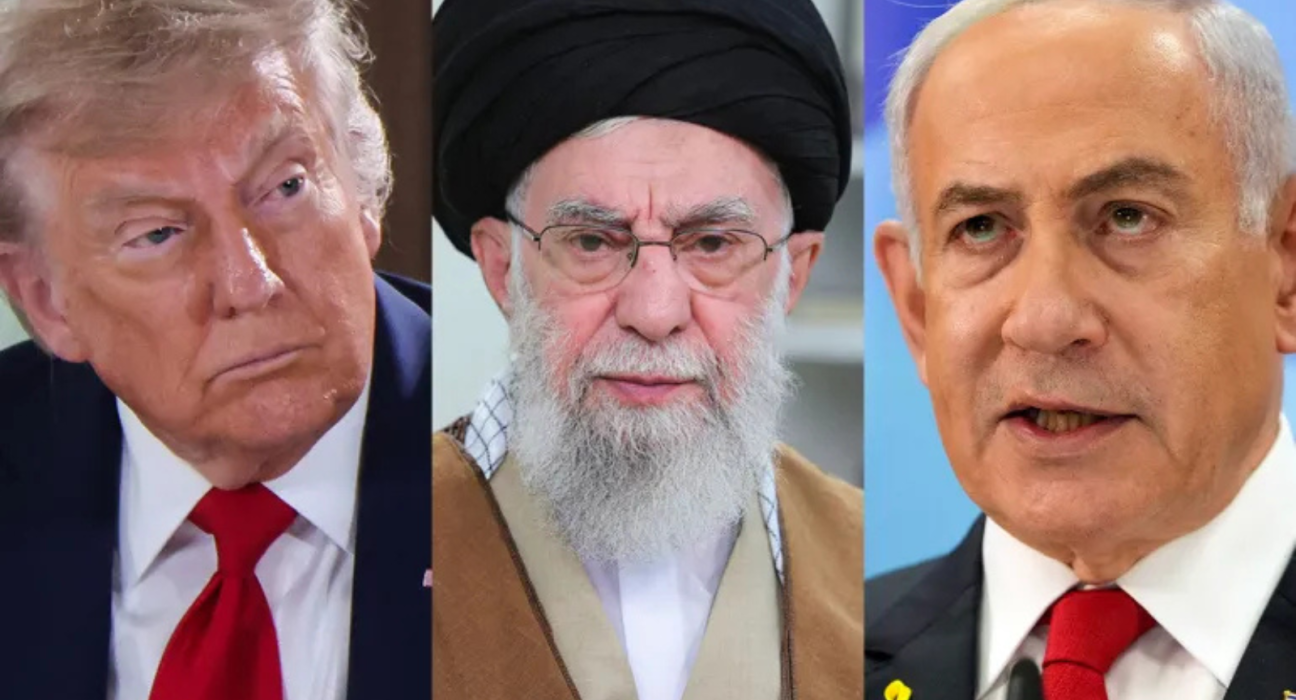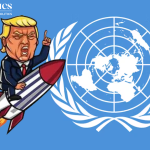The recent twelve-day conflict between Israel, the United States, and the Islamic Republic of Iran, while ostensibly concluding the military engagement, leaves numerous questions unanswered. Has this conflict established a new balance of power and deterrence? Have mutual attacks, by solidifying new rules of engagement, entirely eliminated the prospect of further conflict? Will the disagreements between the two sides be resolved through diplomatic channels, or will the persistence of contentious issues and ongoing actions by both parties create fertile ground for another war?
Unstable Ceasefire and an unlikely Diplomacy
A closer examination of the conflict’s nature reveals the current ceasefire to be inherently unstable. The continuation of contentious issues, the failure of military strikes by Israel and the United States to resolve these disagreements, and Iran’s resolve to persist in its resistance against maximalist Western demands have led astute and pragmatic analysts to anticipate another conflict. Although some, relying on the persistent optimism inherent in any crisis, hope that the devastating consequences of war for both sides will pave the way for diplomatic solutions and potential negotiations, the evident contradictions in the demands of Iran, the United States, Israel, and European nations appear to obscure the horizon for a peaceful resolution of these disputes. While it is premature to abandon hope in diplomacy and its latent potential for conflict resolution, the perceived shift in the regional balance of power, the conflicting nature of demands, and the confrontational stance of both parties post-conflict do not offer a clear outlook for proponents of diplomacy.
Considering the power dynamics governing the region as the sole determinant of future developments, one might venture to assert that predicting a renewed crisis and another conflict is more accurate than anticipating an agreement through negotiation. Despite hopes for this prediction to be disproven and for diplomacy to succeed, it is unfortunately necessary to accept that the logic of state relations in a threatening environment like the international system, particularly in a perilous arena such as the Middle East, is founded not on aspirations and moral desires but on power equations.
Despite ongoing disagreements and fervent debates regarding the future of relations between the West and the Islamic Republic of Iran following the twelve-day war, a comprehensive review of official statements and expert analyses from the West reveals three primary policy options. Proponents of each approach, grounded in realities, future prospects, and undoubtedly their own aspirations (which serve as latent determinants of any outlook), endeavor to persuade the Trump administration, as the principal decision-maker, to adopt their preferred course of action. Given the distinct and impactful consequences of each approach for Iran’s fate and interests, each will be concisely examined in the following sections, as necessitated by the logical flow of this discussion.
Three Western Approaches to Iran
1. Diplomacy
The first Western approach, which appears to garner significant acceptance and desirability among Trump administration officials and European nations, is the endeavor to convert the “achievements” of military action into a substantial strategic victory through diplomacy. Adherents of this approach, premising their views on the assumption that the military strikes by Israel and the United States, alongside economic sanctions and political pressure, have placed Iran in its “weakest position” and even caused “divisions among ruling officials,” believe that diplomacy can now compel Iran to accept maximalist demands.
The West seems to agree on the nature and scope of its demands from Iran: halting domestic uranium enrichment, limiting and weakening missile capabilities, and ensuring Iran’s non-support for regional allies are the three primary Western demands. Furthermore, the West anticipates Iran resuming cooperation with the International Atomic Energy Agency (IAEA) and undergoing its inspections. However, there are disagreements concerning the timeline for achieving these demands. While Israel seeks simultaneous guarantees for these demands, the United States and Europe advocate for a phased process. In other words, the U.S. and Europe aim to first secure a halt to domestic enrichment and continued cooperation with the IAEA, then pursue other demands in subsequent stages.
It appears that President Trump, despite provocations from Netanyahu and American domestic hawks, continues to favor an agreement with Iran over military options. Adhering to his customary approach to contentious issues, Trump believes that maintaining and even employing military threats does not diminish the prospects for diplomacy but rather enhances the possibility of an agreement. His foreign policy approach echoes the famous words of Frederick the Great of Prussia: “Diplomacy without arms is like music without instruments.” Based on this logic, Trump hopes that the completed military attacks and the threat of their repetition will compel Iran to agree to terms.
2. Hardpower
The second approach, primarily supported by Israel, involves the continuation of military attacks against Iran with the aim of preventing the reacquisition of its nuclear and missile capabilities.
Proponents of this approach, operating under the premise of “dominance over Iranian airspace” and “intelligence superiority within Iran,” believe that aerial attacks and cooperation with internal forces can prevent the revival of Iran’s nuclear and missile capabilities. Although Trump himself supports an agreement, in a recent meeting with Netanyahu, he did not rule out military action if necessary. Maintaining a constant military threat and conducting frequent attacks would render Iran a debilitated and helpless state, thereby setting the stage for political and social transformations within the country. In addition to continuous military strikes against nuclear and military facilities, Israel seeks to destabilize Iran politically and socially through actions targeting political institutions, individuals, and administrative and service organizations, as well as through sabotage.
The focus of such operations appears to be primarily in Tehran and border regions. In Tehran, efforts would concentrate on paralyzing the government in its administrative, service, and, most importantly, military and security control sectors. In border regions, efforts would aim to activate dissatisfied cells and groups with the objective of undermining sovereignty over these vital areas.
3. Regime Change
The third and most controversial Western approach to Iran is the attempt at regime change. Some in Israel and the United States believe that now is the most opportune time for regime change in Iran. Economic pressures, political discontent, social fragmentation, divisions within the ruling establishment, and, most critically, the weakening of military capabilities due to Israeli and American attacks, have created the most favorable environment for a political system change in Iran and the emergence of a new regional landscape in the Middle East.
This approach, based on the assessment that Israeli and American military attacks, particularly the assassination of military commanders and threats against political officials, have unprecedentedly undermined the integrity of governance in Iran, advocates for continued attacks, especially targeting high-ranking officials, as a pathway to regime change. Drawing a parallel between Iran’s current situation and Iraq in 1991, proponents of regime change in Iran have concluded that the mistake made by George H.W. Bush concerning Iraq in the 1990s should not be repeated with Iran. Granting Iran time would allow it to restore its military capabilities and regional support for aligned military groups, thereby threatening Western interests. Therefore, regime change should be pursued as a viable and serious option.
While Trump himself is a prominent critic of military action aimed at political system change in U.S. foreign policy, his personal characteristics and insatiable desire to present unparalleled achievements, coupled with comparisons to Ronald Reagan, might incentivize him to pursue political system change in Iran. Adherents of this approach attempt to encourage Trump to adopt a policy of regime change by reiterating the argument that Reagan’s policies led to the collapse of the Soviet Union and that a similar policy is now feasible in dealing with Iran. Trump has so far resisted these provocations, but given that unpredictability is Trump’s most predictable trait, the possibility of a policy shift should not be disregarded.
Future Outlook
It is crucial to note that the three afore mentioned approaches are not necessarily mutually exclusive. The West, based on its assessment of Iran’s position, may simultaneously pursue all four options. The resumption of negotiations does not inherently signify the elimination of the military option, the cessation of military attacks, efforts to destabilize internally, or the groundwork for regime change. Only the prospect of a war with irreparable damage and a serious threat to U.S. and allied interests in the region from Iran could lead to the removal of the military option from Western choices and the prioritization of diplomacy over conflict.
The calculation of power is the sole factor that will determine Western choices in confronting Iran. Neither reliance on international law nor the United Nations Charter will impede Western policies. In such circumstances, the re-introduction of views such as Trump’s opposition to the military option for partisan and domestic reasons, disagreements with Netanyahu over the consequences of military action, or Trump’s preference for an agreement at any cost should not prevent the prediction of another war.




